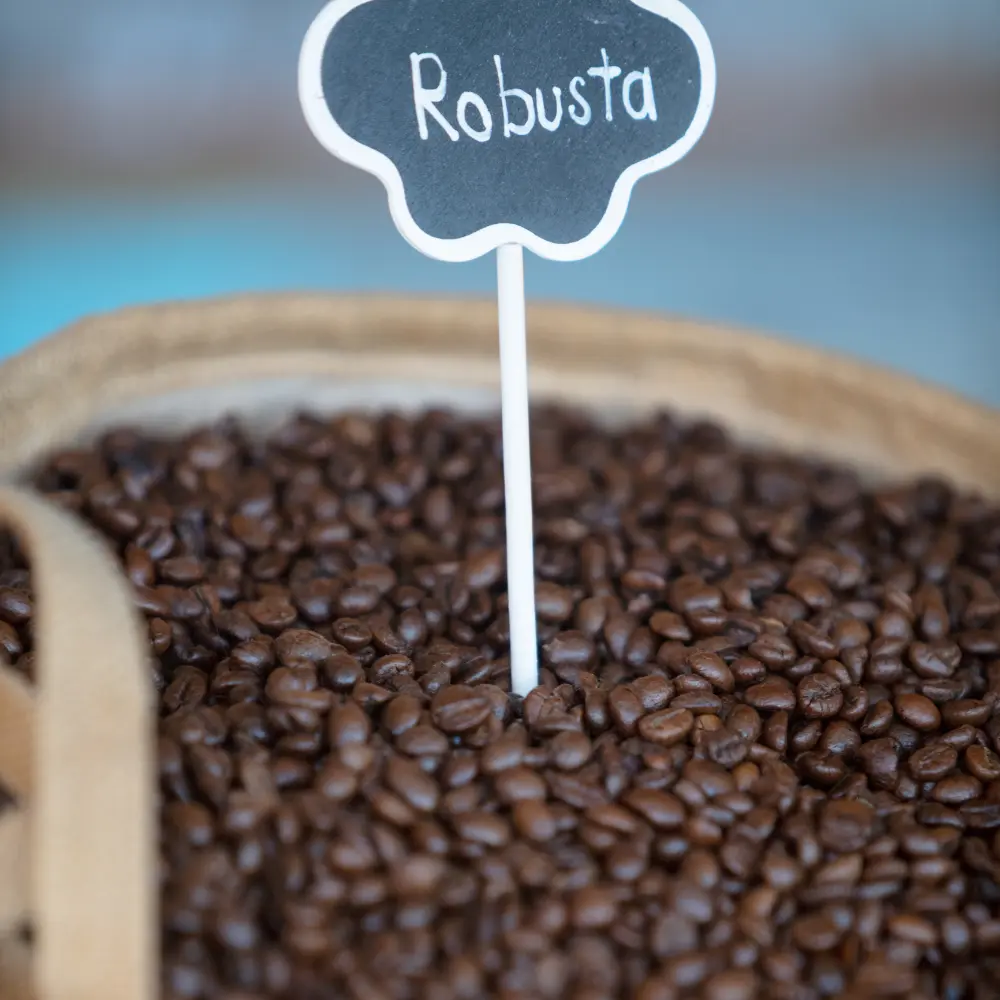Welcome, coffee enthusiasts, connoisseurs, and explorers alike! Today, we embark on an exciting expedition into the world of Sumatra coffee, an adventure that promises to be as rich and engaging as the coffee itself. Famous for its unique, complex flavors, Sumatra coffee is a gem in the crown of global coffee culture. The journey we’re about to undertake is more than just a deep dive into a coffee variety; it’s an exploration of history, of unique cultivation and brewing techniques, and of the powerful connection between people and the land they cultivate.
Sumatra coffee beans are known for their distinct flavor profile, brought to life by the island’s fertile volcanic soil and tropical climate. But what is Sumatra coffee beyond just its taste? As we’ll discover, it’s a testament to the Indonesian island’s vibrant culture and a major player in the world’s coffee scene. So, whether you’re a seasoned coffee expert or you’re just dipping your toes into the vast ocean of coffee knowledge, this comprehensive guide will help you understand and appreciate the world of Sumatra coffee in all its bold, robust glory. Let the exploration begin!
Sumatra Coffee: Key Takeaway
- Sumatra’s Geography and Climate: The distinctive flavor and quality of Sumatra coffee are deeply influenced by the island’s volcanic soil and tropical climate. These factors, along with its high altitude and regular rainfall, create optimal conditions for growing coffee beans.
- Unique Processing Method: The unique wet-hulling process, known as “Giling Basah” in Sumatra, contributes significantly to the coffee’s distinctive taste. This method, adapted to suit Sumatra’s humid conditions, results in coffee beans with a signature earthy and herbal flavor profile.
- Flavor Profile of Sumatra Coffee: Sumatran coffee beans are recognized for their full-bodied, complex flavor, low acidity, and earthy and herbal undertones. These characteristics make Sumatran coffee a favorite among coffee lovers seeking bold and exotic taste profiles.
- Top Sumatra Coffee Brands: Renowned brands like Starbucks, Peet’s Coffee, and Volcanica offer premium Sumatra coffee selections that offer unique flavor profiles, ranging from spicy and smooth to richly heavy-bodied.
- Kopi Luwak and Sumatra Coffee: While Kopi Luwak is often associated with Sumatra, it’s not Sumatra coffee. This infamous coffee is made from beans passed through the digestive tract of palm civets. Despite its high price and unusual production method, the quality and ethical issues surrounding Kopi Luwak make it a contentious choice in the world of coffee.
The Historical Roots of Sumatra Coffee

Coffee has a long, complex history that spans centuries and continents, and the story of Sumatra coffee is an integral part of this global narrative. From its early beginnings, through periods of colonization and transformation, Sumatran coffee has emerged as a unique and cherished variety in the world of coffee.
The Early Beginnings of Coffee in Sumatra
Coffee is believed to have arrived in Indonesia, including Sumatra, around the late 1600s through Yemeni traders and Dutch colonists. It was the perfect soil and climate for coffee cultivation, particularly for what would eventually be recognized as Sumatra coffee beans. The beans were planted in the fertile volcanic soils of the region, and the tropical climate of Sumatra provided the ideal conditions for the coffee plants to flourish. (1)

In these early years, local farmers utilized traditional methods of cultivation and harvesting, a practice that significantly contributed to the development of the distinct flavors and aromas of coffee beans. These elements, coupled with the unique processing method, started the journey of Sumatra coffee on its path to global recognition.
Dutch Colonization and Its Impact on Sumatran Coffee
The real turning point in the history of Sumatran coffee came during the period of Dutch colonization. It was during the 17th century that the Dutch East India Company, attracted by the suitable coffee growing conditions in the region, began to cultivate coffee in Sumatra on a larger scale. The coffee was exported extensively to Europe, increasing its visibility and popularity on the global stage.
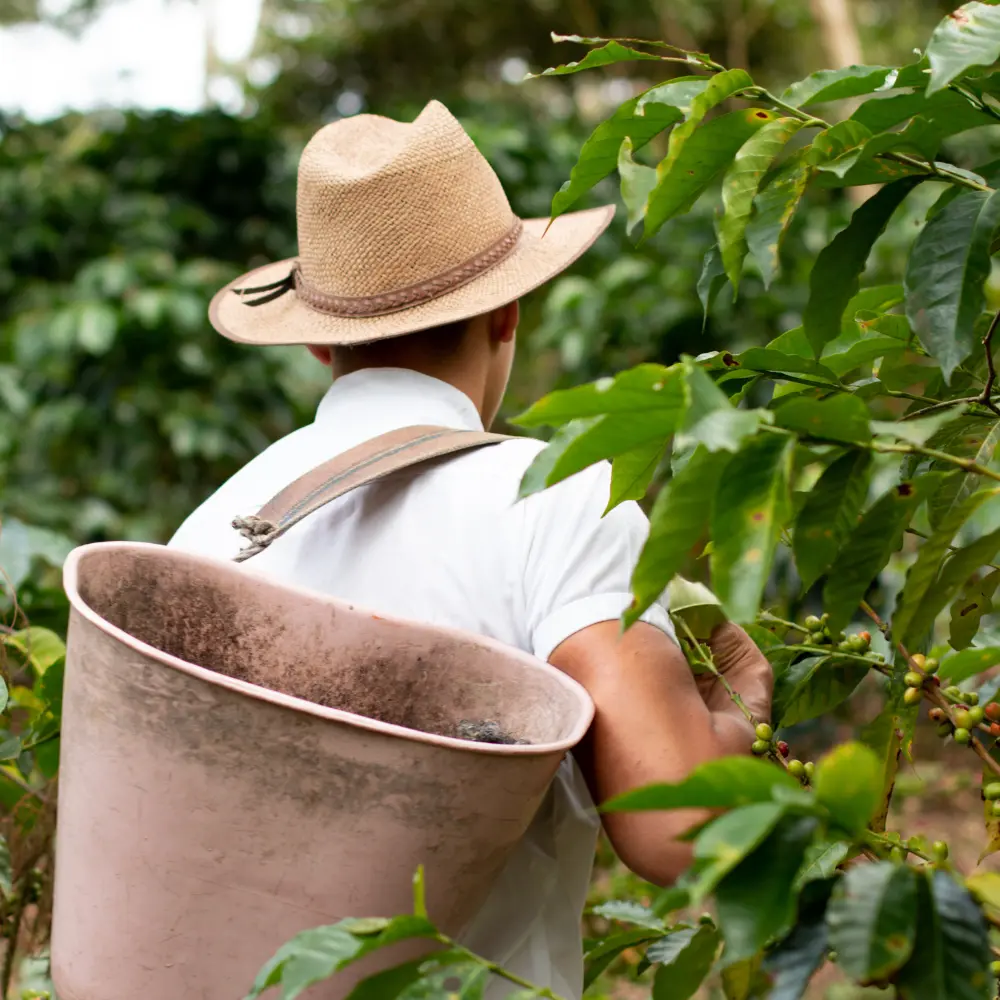
The Dutch introduced new farming and processing techniques to the local farmers, improving the quality and yield of the coffee beans. However, this period was also marked by exploitation and harsh farming conditions. Despite the dark aspects of this era, the Dutch colonization undeniably played a significant role in promoting Sumatran coffee and setting the foundation for its present-day popularity.
The Evolution of Sumatra Coffee in Modern Times
Today, Sumatran coffee is one of the most sought-after coffee varieties in the world. The journey from the early days to the modern era hasn’t been smooth, though. In the early 20th century, a leaf rust disease devastated the coffee crops in Sumatra. In response, farmers began to grow a more disease-resistant variety of coffee, the Robusta.

However, the demand for the unique flavor profile of Arabica beans, particularly Sumatran coffee, led to its revival. Farmers returned to growing Arabica, utilizing traditional and modern techniques to maintain the quality of the beans while ensuring better disease resistance.
Contemporary Sumatran coffee is defined by its characteristic earthy flavor, low acidity, and complexity that tantalizes the taste buds. It is enjoyed by coffee lovers globally, in homes and gourmet coffee shops alike. Its appeal extends beyond the sensory pleasure it provides; it also represents a rich history, a testament to resilience, and a commitment to preserving traditional coffee farming practices.
Thus, the history of Sumatra coffee serves as a testament to the adaptability and resilience of both the coffee beans and the people who cultivate them, and it is this fascinating journey that makes every cup of Sumatran coffee a flavorful experience worth savoring.
Unearthing Curiosities: Fun Facts About Sumatran Coffee
Sumatra was one of the first places in the world where coffee was grown commercially, which is why it has such a long and illustrious history in the global coffee market. Its coffee is considered one of the foundations of the global specialty coffee movement. Let’s go over some fun facts about this coffee below:
Time-Tested Traditions
Sumatran coffee farmers still use traditional techniques for farming and processing the coffee, many of which have been passed down through generations. These methods give Sumatran coffee its one-of-a-kind taste and character.
Arabica Anomaly
While Indonesia’s overall coffee export leans heavily towards Robusta coffee, making up about 80% of the total, Sumatran coffee is an exception. Almost all coffee exported from Sumatra is of the Arabica variety, with each 12-ounce mug delivering approximately 100-120 mg of caffeine, aligning with the caffeine content in most coffees.
Mandheling Misnomer
Contrary to common belief, “Mandheling” is not a geographic location but rather the name of a tribe in northern Sumatra. The term became linked with the coffee when the tribe’s name was mistakenly imprinted on coffee bags as a regional identifier, a misinterpretation that has endured.
Matriarchal Mastery
An impressive 80% of the Sumatran coffee farm labor force comprises women, exhibiting the region’s strong female presence in the coffee industry. Further enhancing gender equality and coffee quality, women-led cooperatives are becoming more prevalent, backed by external organizations providing training and financial assistance.
The Blues of Processing
The traditional wet-hulling technique, known locally as “giling basah,” is predominantly used for Sumatran coffee. This unique process not only shapes the characteristic flavors of Sumatran beans but also imparts them with a striking bluish hue before roasting.
Organic Practices
Given its rich volcanic soil and tropical climate, Sumatra is a natural paradise for coffee trees. The use of synthetic fertilizers and pesticides is minimal, if at all, leading to the cultivation of organically grown coffee, which is an appealing attribute for many coffee enthusiasts.
Mystery of Lake Toba
The world’s largest volcanic lake, Lake Toba, is located in Sumatra. This lake, believed to be the result of a massive volcanic eruption around 74,000 years ago, contributes to the mineral-rich soil of the region, giving Sumatran coffee its distinct taste.
Coffee and Conservation
Efforts are being made to use coffee farming in Sumatra as a means to promote conservation efforts. Shade-grown coffee farms help maintain the local ecosystem and provide a habitat for local wildlife, including several endangered species.
The Unique Profile of Sumatra Coffee
Sumatra coffee is renowned for its distinct flavors, which are deeply influenced by the unique geography and climate of the Indonesian island. Along with its organic characteristics, there are a number of popular varieties that coffee enthusiasts globally appreciate and enjoy.
Sumatra: A Verdant Canvas for Perfect Coffee Cultivation

Nestled in Indonesia, Sumatra is the largest island renowned for its ideal coffee cultivation conditions. As mentioned before, its exceptional geographical features and climate dramatically influence the quality and flavor of Sumatran coffee.
The island is enveloped by fertile volcanic soil, enriched with essential minerals, promoting the growth of dense, flavor-packed coffee beans. Being on the equator, Sumatra enjoys a tropical climate with abundant sunshine punctuated by intermittent rainfall – a gardener’s dream scenario. The high altitudes further provide the perfect ambiance for Arabica plants to flourish.
Highlights:
- Tropical climate owing to the island’s equatorial location, ideal for arabica coffee growth.
- Volcanic soil rich in minerals enhances the coffee beans’ density and flavor.
- High altitudes favor the thriving of Arabica coffee plants.
The Signature Flavor Profile of Sumatra Coffee

Sumatran coffee distinguishes itself with a unique flavor profile, marked by its bold, full-bodied essence. Earthy and herbal undertones often characterize these beans, with a slight hint of spice adding to the complexity. Coupled with low acidity, Sumatran coffee provides a smooth, rich experience for those seeking a less acidic brew.
As discussed earlier, an essential attribute of Sumatran coffee is the post-harvesting process, known as “wet hulling” or “giling basah” in the Bahasa language. Predominantly used in Sumatra due to its humid conditions, this method attributes to the coffee’s unique taste and its signature earthy and spicy notes.
Highlights:
- Signature flavor profile: Bold, full-bodied with earthy and herbal undertones and a slight hint of spice.
- Low acidity making the brew smoother.
The Processing Influence on Sumatran Coffee Flavor
Processing plays a crucial role in determining the flavor profile of Sumatran coffee. Wet hulling, the dominant processing method, retains higher moisture content in the beans compared to other methods. Despite the humid climate of Sumatra providing less than four hours of drying time per day, this method enables the beans to develop their unique flavor.
This method involves removing the coffee cherries’ skin, fermenting them overnight, handwashing the remaining fruit from the beans, and drying them in their parchment before final drying and roasting. This meticulous processing accentuates the earthy and herbal notes, the signature of Sumatran beans, especially evident in wet-hulled coffees, which often present a more delicate body and balanced brew.
Highlights:
- Wet hulling, retains a higher moisture content, leading to a unique flavor.
- Despite limited drying time due to Sumatra’s humid climate, wet hulling enables the development of the coffee’s signature earthy and spicy notes.
- This meticulous process contributes to the complexity of the Sumatran coffee flavor profile.
With each sip of Sumatran coffee, you’re experiencing not just the result of carefully cultivated beans, but the perfect harmony of the island’s geography, climate, and time-honored processing techniques.
The Mosaic of Sumatra Coffee: Unveiling the Distinct Varieties
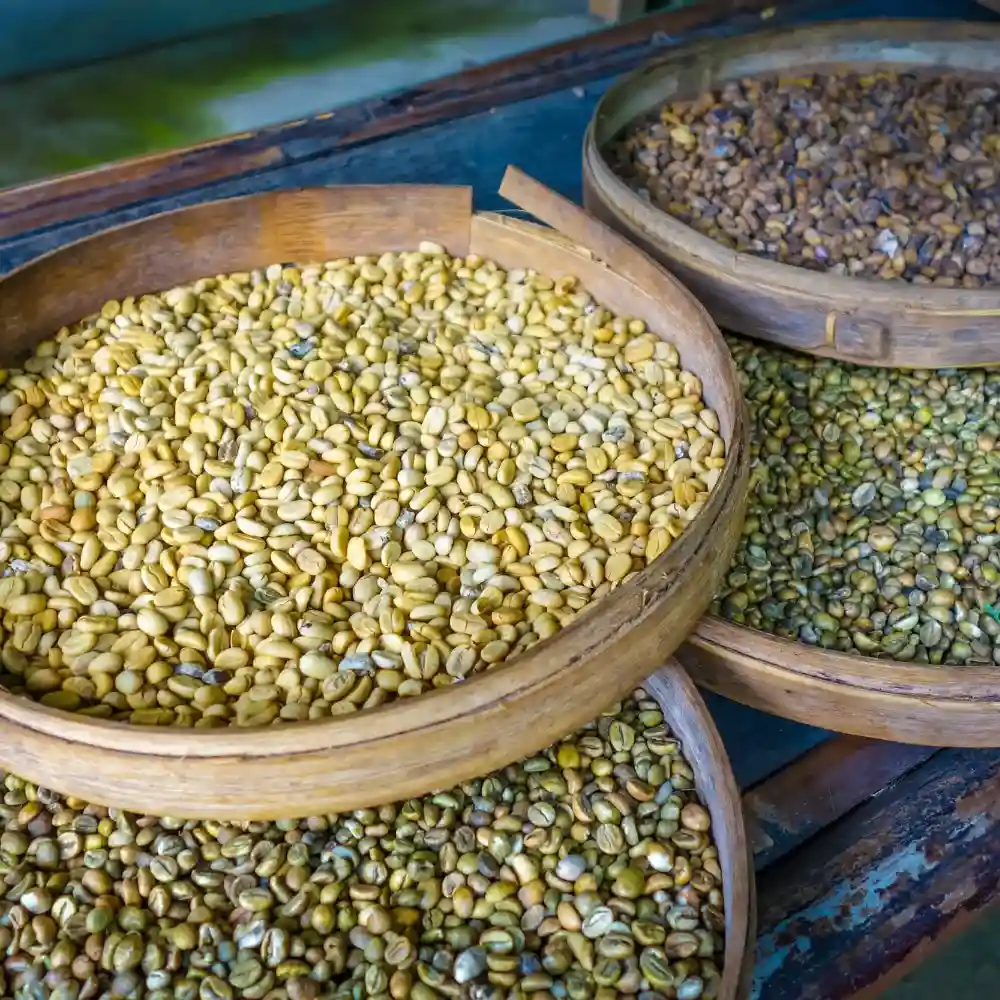
Sumatra, the verdant Indonesian island, is known for its diverse coffee varieties. Each region contributes to the unique tapestry of Sumatran coffee, offering a distinct flavor profile nurtured by the specific local geography and traditional processing methods.
Mandheling: The Exotic Symphony of Flavors
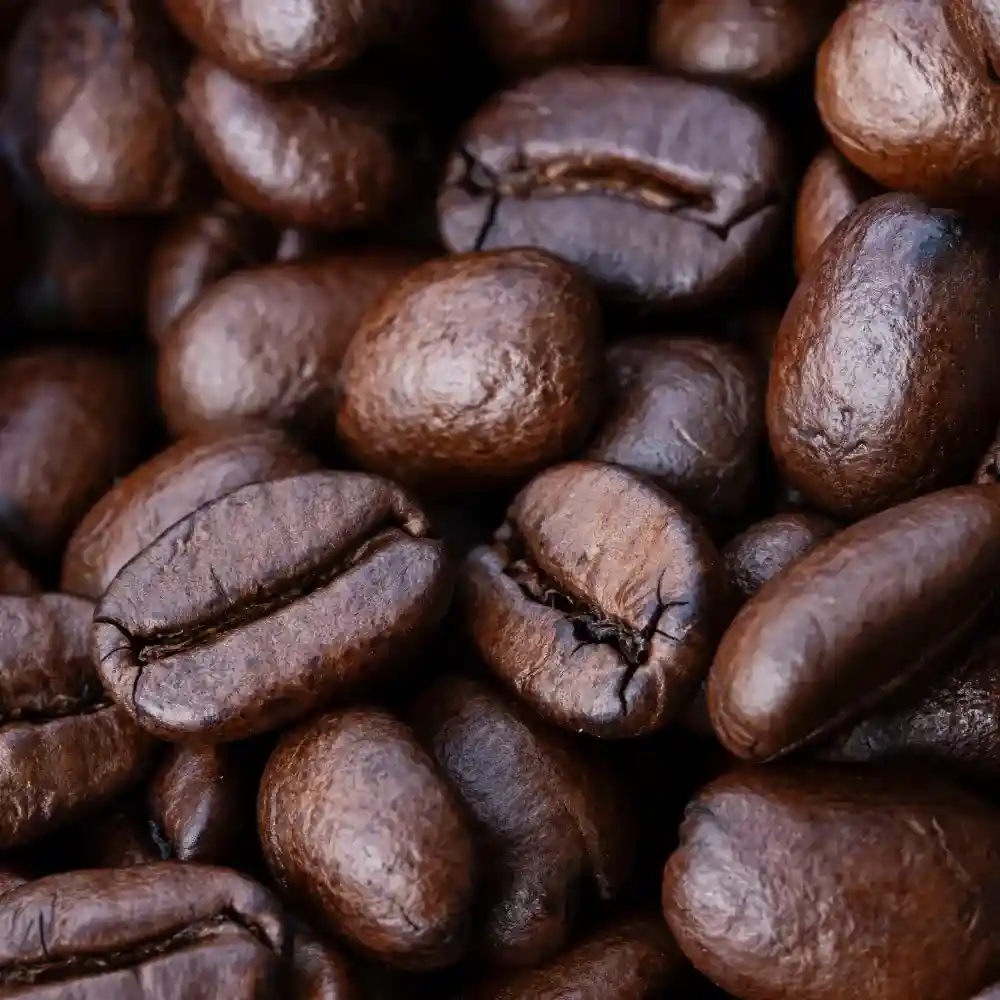
Considered by many as the crown jewel of Indonesian coffee, Sumatra Mandheling coffee is frequently sought after by connoisseurs worldwide. Known for its full-bodied, earthy flavor, Mandheling coffee has an exotic appeal that sets it apart.
Fun facts / Highlights:
- Named after the Mandheling people who traditionally cultivate the coffee.
- Known for its rich, earthy flavor and full body.
- Often used by restaurants and cafes for its distinctive taste.
Lintong: The Cedar-Spiced Brew from Lake Toba

Nestled in the southwestern tip of Lake Toba, the Lintong coffee variety offers a harmonious blend of rich flavor and a clean aftertaste. The brew exhibits the signature earthiness of Sumatran coffee, infused with unique notes of cedar and spice.
Fun facts / Highlights:
- Grown in the Lintongnihuta region, home to the altitudes necessary for Arabica coffee cultivation.
- Offers a unique cedar and spice flavor not found in other coffees.
- Distinguished by its brighter acidity and clean aftertaste, making it a unique pick amongst Sumatran coffees.
Ankola: The Mellow Brew from Padang Port
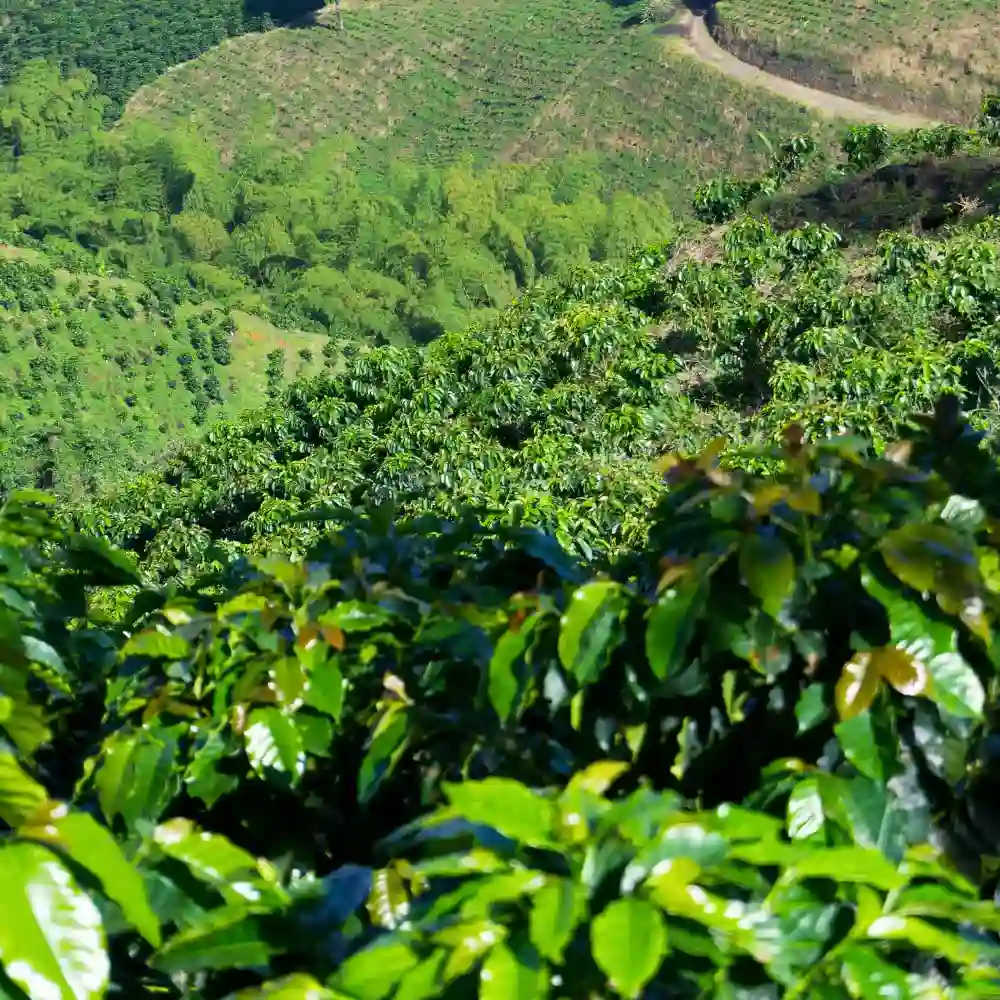
Ankola coffee hails from the highlands near the port of Padang. Known for its mellow acidity and distinct flavor profile, Ankola beans undergo dry processing, a departure from the traditional wet-hulling method prevalent in Sumatra.
Fun facts / Highlights:
- Grown between 2,500 and 5,000 feet above sea level.
- Dry-processed, creating a uniform appearance and a unique flavor profile.
- Offers a more mellow acidity compared to other Sumatran coffees.
Gayo/Aceh: The Treasured Aged Coffee from the High Peaks
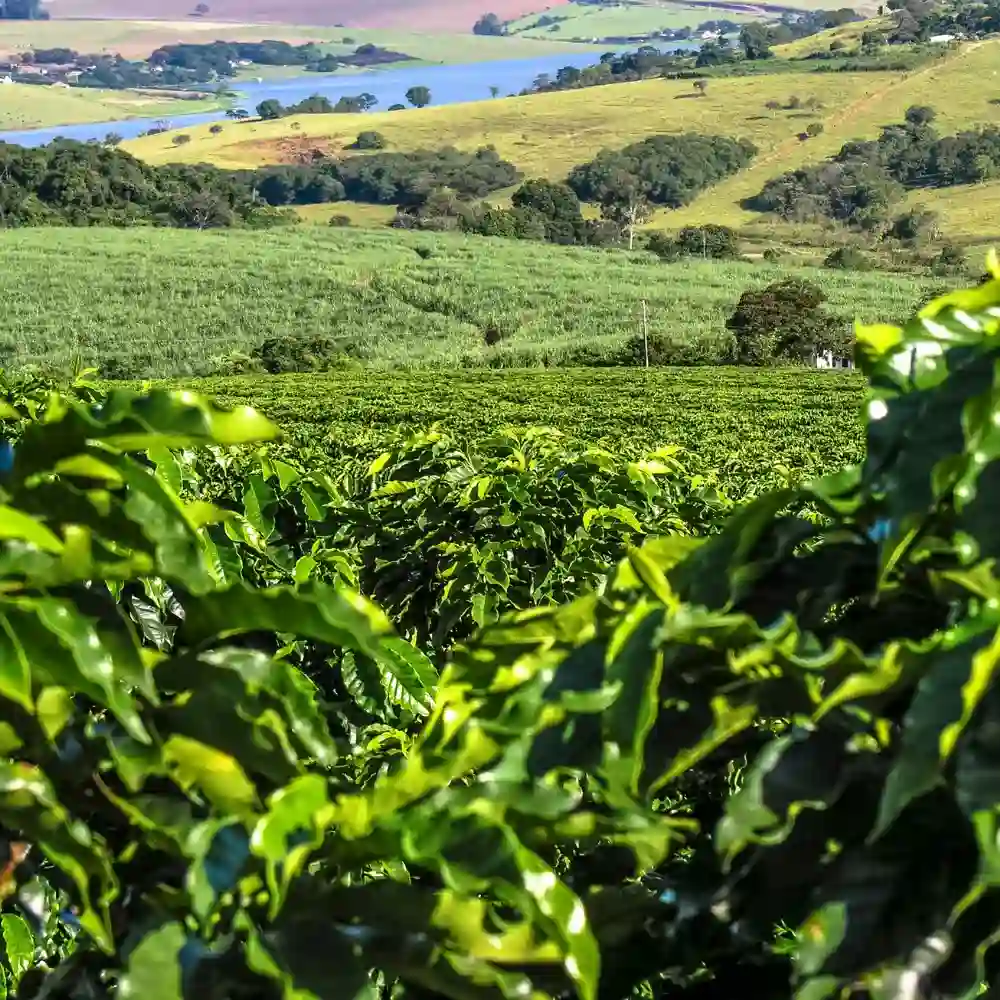
The Gayo/Aceh region, enveloped by the towering Gayo Mountain and serene Lake Tawar, stands out in the world of coffee for its aged beans. Stored for months or even years, Gayo/Aceh beans develop a complex flavor profile that’s cherished by coffee aficionados for its rarity and sophistication.
Fun facts / Highlights:
- Grown at altitudes ranging from 1200 to 1700 feet above sea level.
- Noted for its aged coffee, which develops complexity over time.
- Valued for its relative rarity and complex flavor profile, adding an extra dimension to the Sumatran coffee experience.
These distinctive varieties, each with its unique characteristics, come together to weave a rich and diverse narrative of Sumatran coffee, making it one of the most treasured offerings in the world of coffee.
In summary, the uniqueness of Sumatra coffee lies not only in its flavors but also in its geographical origin, the influence of the island’s climate, and the varieties that have evolved from this combination of factors. Each cup offers an experience that is as rich and diverse as the island itself.
Sumatra Coffee vs Colombian Coffee: A Comparative Analysis
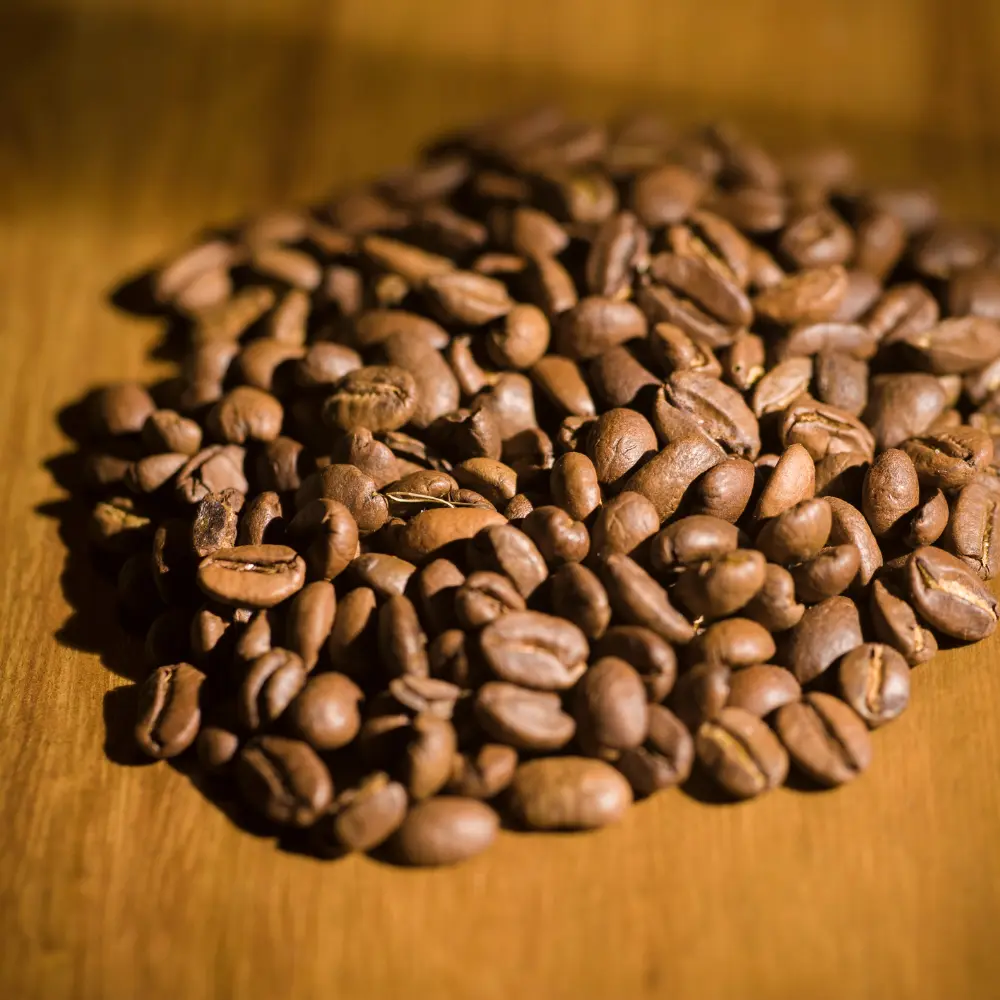
When it comes to globally appreciated coffee, Sumatra and Colombia certainly stand tall in their respective corners. Their unique geographical attributes, processing methods, and resultant flavor profiles set them apart in the coffee world. Let’s take a deeper look into the distinguishing factors between Sumatra coffee and Colombian coffee.
The Unique Growing Conditions
Sumatra, a tropical Indonesian island, enjoys rich, volcanic soil and a climate that lends itself to the slow, flavor-rich maturation of coffee beans. The beans are predominantly processed using the ‘wet hulling’ method, which contributes to the unique, full-bodied, and earthy flavor profile of Sumatran coffee.

On the other hand, Colombia’s geography provides coffee growers with high mountain ranges, rich volcanic soil, and a climate that enables year-round harvesting. Colombia is known for the ‘washed’ processing method, which allows beans to dry out fully and results in a clean, mild flavor.
The Distinguishing Flavor Profiles
Sumatran coffee is known for its robust, low acidity profile. It often carries earthy and herbal undertones, and there’s a slight hint of spice, adding to its complexity.
Colombian coffee usually presents a balanced, mild flavor with medium to high acidity and a nutty, fruity profile. It’s well-known for being smooth and easy to drink, making it a popular choice among coffee lovers.
The Global Impact
Both Sumatra and Colombia have made significant contributions to the global coffee industry. While Sumatra is recognized for its unique processing methods and distinctive flavors, Colombia is celebrated for its consistent, high-quality coffee production.

The choice between Sumatran and Colombian coffee ultimately depends on personal preference. If you appreciate a full-bodied, complex coffee with earthy undertones, Sumatra coffee might be your best bet. However, if you prefer a smooth, balanced coffee with a nutty and fruity profile, Colombian coffee would be an excellent choice.
The Art of Brewing Sumatra Coffee
The unique taste of Sumatra coffee isn’t just in the beans; it’s also in the way they are brewed. The brewing process, both traditional and modern, deeply influences the final taste of the coffee, adding a distinct depth and complexity to it.
The Traditional Sumatran Brewing Technique
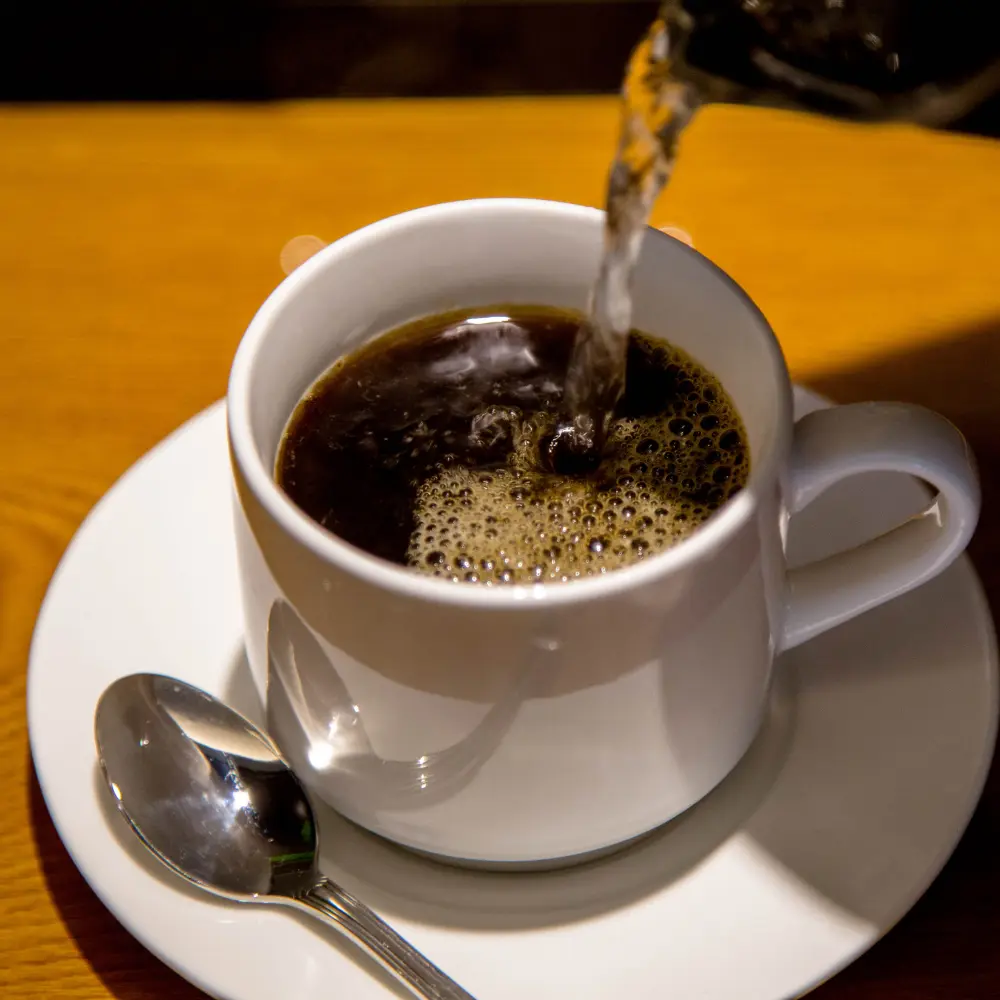
In Sumatra, the traditional brewing method is known as “tubruk” coffee. It’s a technique that is simple, yet effective in extracting the rich, full-bodied flavor of the Sumatran coffee. In this method, ground coffee is added directly to a cup, then boiling water is poured over it. The mixture is stirred and left to sit for a few minutes. The coffee grounds gradually sink to the bottom, leaving a thick, strong brew to be enjoyed. This method, though simple, requires careful attention to the grind size and water temperature to ensure that the essence of the Sumatra coffee beans is captured perfectly.
How to Brew Sumatra Coffee at Home

Brewing Sumatra coffee at home can be a wonderful way to start the day or a comforting ritual to wind down. The rich, complex flavor profile of Sumatran coffee makes it suitable for a variety of brewing methods, including French press, pour-over, and cold brew.
- French Press: This method preserves the coffee’s natural oils and extracts the bold, full-bodied flavor of the beans. Use coarse grounds and steep for about 4-5 minutes before pressing.
- Pour-over: This method highlights the coffee’s subtle flavors and is perfect for those who prefer a cleaner and brighter taste. Be sure to rinse your paper filter first to remove any paper taste.
- Cold Brew: Perfect for individuals who enjoy a milder and less acidic coffee, the cold brew method entails steeping coarsely ground coffee in cold water for an extended duration, typically ranging from 12 to 24 hours, followed by straining.
Regardless of the method chosen, always remember to use fresh, high-quality beans for the best flavor.
Pairing Foods with Sumatra Coffee

Due to the complex flavor profile of Sumatra coffee, it pairs well with a variety of foods. Here are some suggestions:
- Sweet pastries and desserts: The earthy tones and low acidity of Sumatra coffee balance the sweetness of pastries, cakes, and desserts.
- Spiced dishes: Its bold flavor complements the spices in savory dishes, making it an excellent choice for brunch or dinner.
- Dark Chocolate: The earthy, dark cocoa notes of Sumatra coffee blend harmoniously with dark chocolate, enhancing the overall tasting experience.
Understanding the art of brewing and food pairing not only enhances the enjoyment of Sumatran coffee but also brings us closer to the culture and tradition that it represents. It’s an experience that goes beyond taste, into a world of history, craftsmanship, and culinary art.
Sumatra Coffee and Sustainable Farming
Sustainability is a central theme in today’s coffee industry. In Sumatra, where coffee farming plays a vital role in the local economy, sustainable practices and fair trade are crucial for the future of both the coffee and the communities that rely on it.
The Role of Coffee Farming in Sumatra’s Economy
Coffee farming has been an integral part of Sumatra’s economy for centuries. It provides a livelihood for thousands of farmers and their families, particularly in the rural areas. The quality of Sumatran coffee, which is considered among the best in the world, has led to significant demand in the international market.
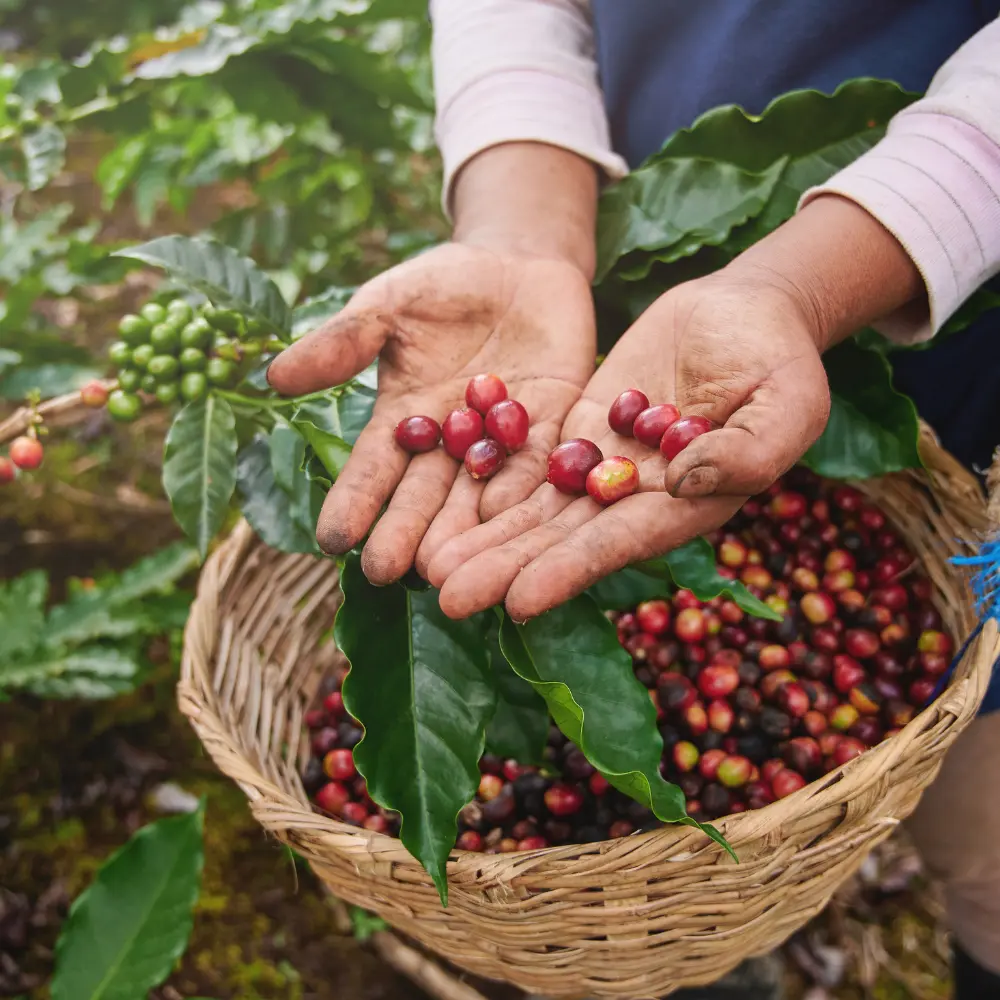
Brands like Starbucks and Peet’s Coffee have popularized Sumatra coffee around the globe, further enhancing its economic value. However, with the rise in demand, there’s also an increased need for sustainable and fair farming practices to ensure the continued production of high-quality coffee while also supporting the well-being of the farmers and the environment.
Practices of Sustainable Coffee Farming in Sumatra
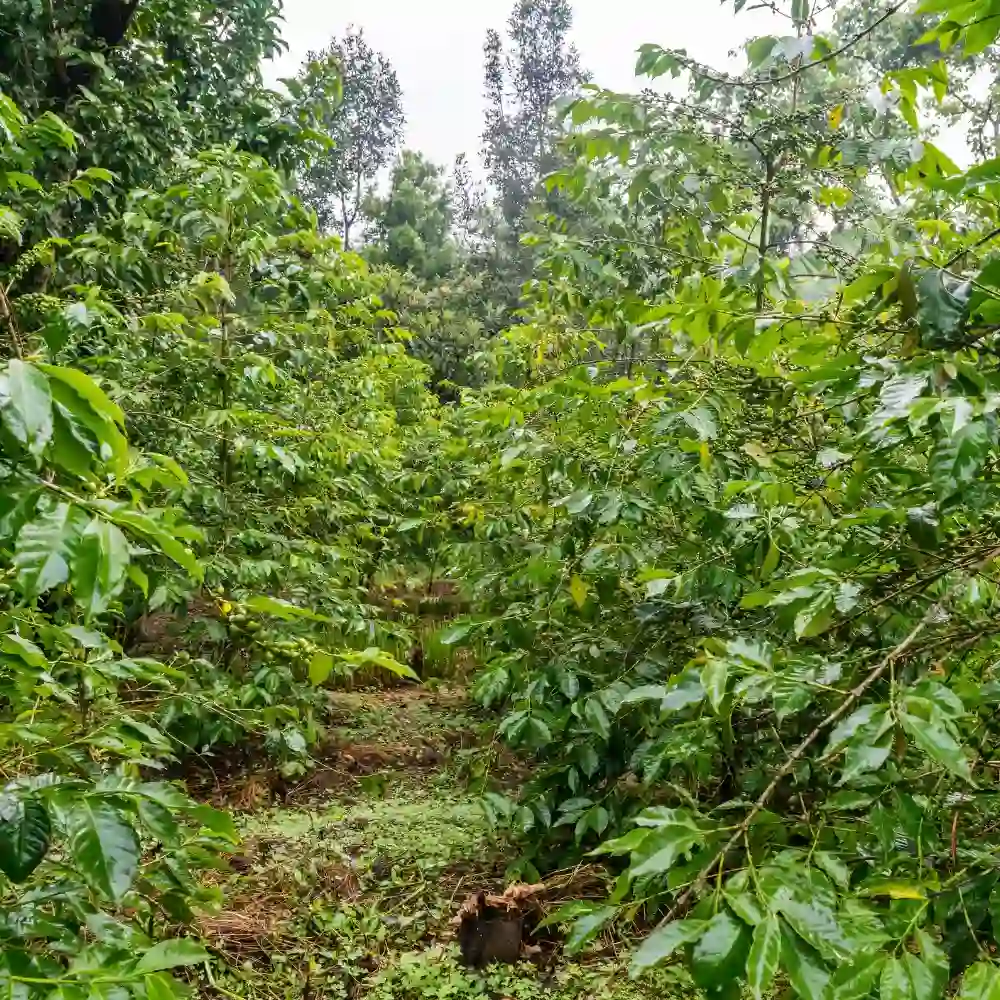
Sustainable farming practices are increasingly embraced in Sumatra to maintain the health of the soil, protect the environment, and ensure the well-being of farming communities. This approach involves several strategies:
- Organic Farming: Organic Sumatra coffee is grown without synthetic fertilizers and pesticides, protecting the soil and local ecosystems from chemical pollution. This not only produces healthier coffee beans but also contributes to biodiversity preservation.
- Shade-Grown Coffee: This practice involves growing coffee under a canopy of trees, mimicking the plant’s natural habitat. This method helps to preserve the soil, reduce the need for chemical inputs, and protect bird habitats. (2)
- Terrace Farming: To prevent soil erosion on the steep slopes where coffee is often grown, some farmers in Sumatra use terrace farming. This technique helps to preserve the topsoil and the overall health of the land.
Fair Trade and Sumatra Coffee
Fairtrade is a critical aspect of the sustainable coffee movement. Fairtrade certification ensures that farmers are paid a fair price for their coffee, promoting better working conditions and supporting community development. Many fair trade coffees also follow organic and sustainable farming practices, adding a layer of environmental responsibility.
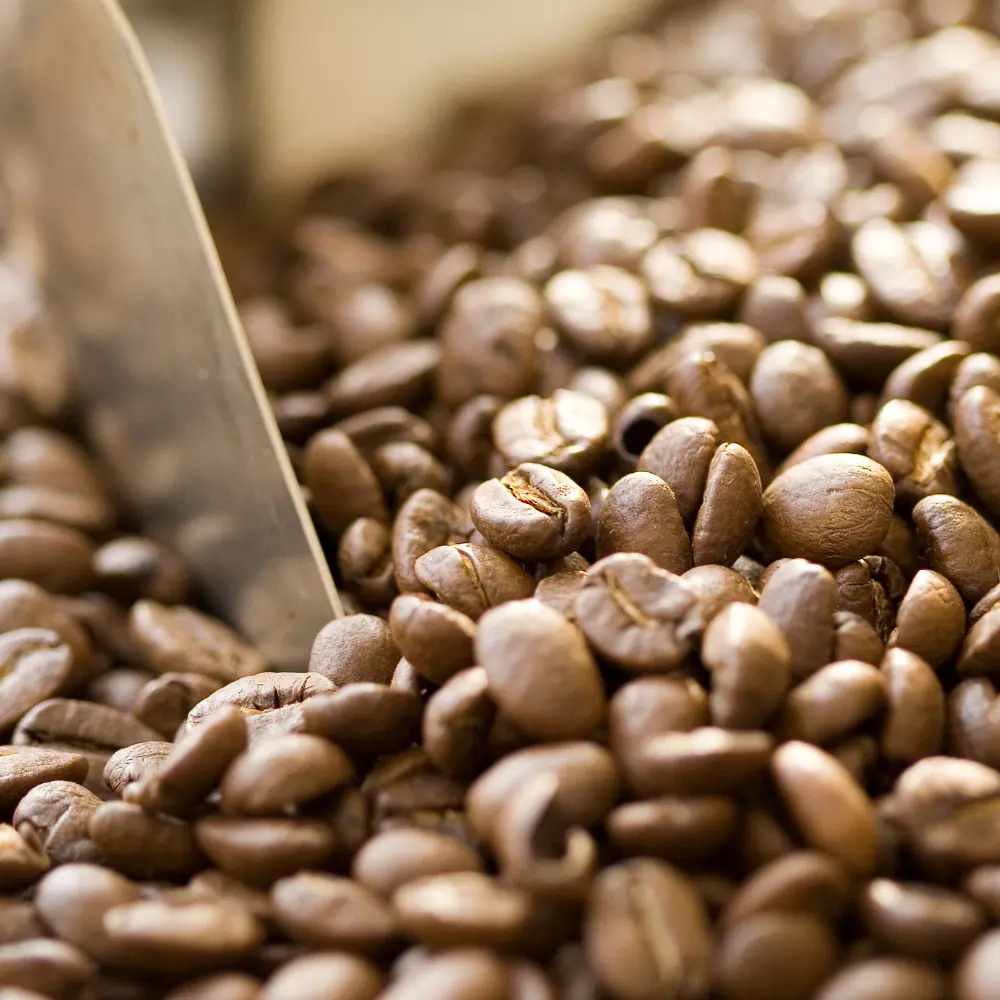
When you buy fair trade Sumatra coffee, you’re supporting the hard-working farmers who put so much care into producing the coffee beans, while also promoting sustainable farming practices. This ensures that we can continue to enjoy the best Sumatra coffee without causing harm to the environment or the communities that grow it.
Sustainable farming and fair trade practices in Sumatra’s coffee industry are essential for the future of this unique coffee variety. Through conscious consumer choices, we can contribute to a more sustainable and equitable coffee industry.
Sumatra Coffee in the Global Market
The global coffee market is diverse and dynamic, with Sumatra coffee playing a significant role. From its journey from farm to cup to its worldwide demand and future prospects, Sumatra coffee continues to leave its mark on the international coffee scene.
The Journey of Sumatra Coffee Beans from Farm to Cup
The journey of Sumatra coffee beans is a testament to the meticulous care and hard work invested in every stage of coffee production. This journey begins in the lush, volcanic soils of Sumatra, where the coffee cherries are carefully grown and hand-picked at the peak of ripeness.
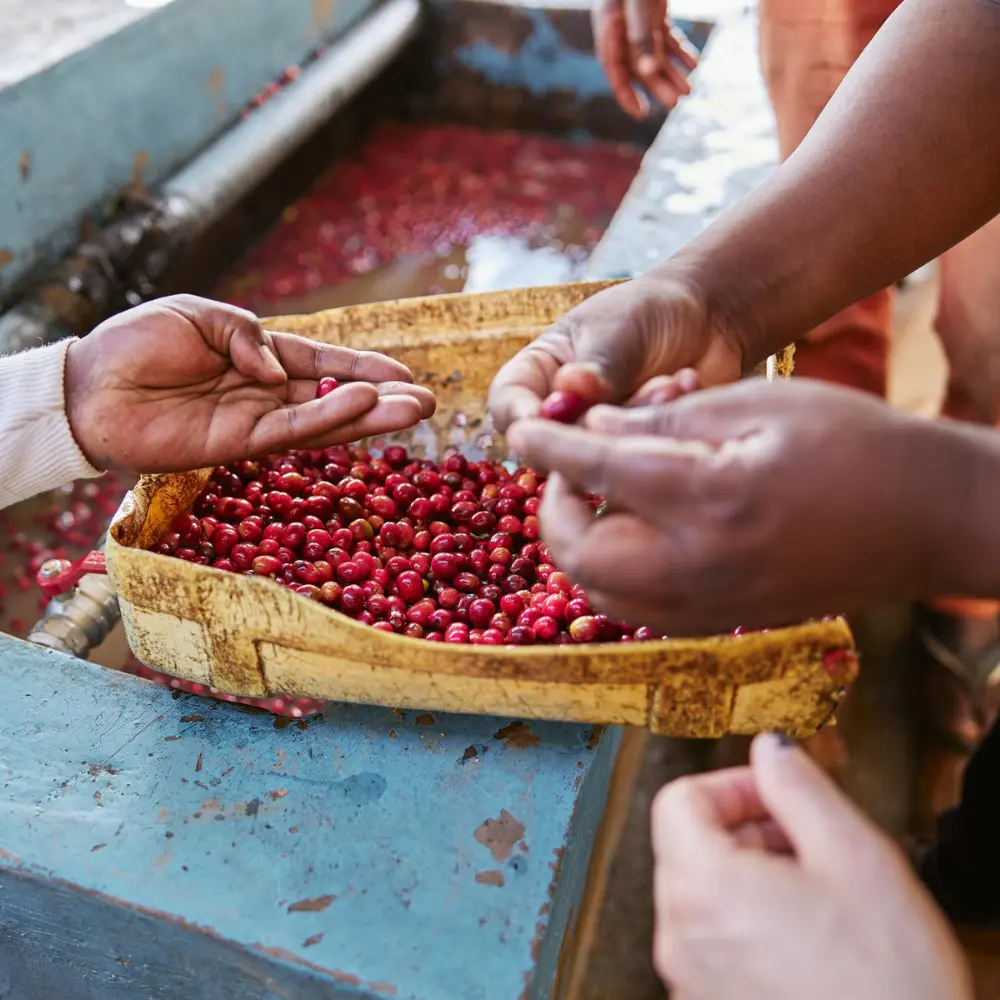
Once harvested, the beans undergo a unique wet-hulling process (also known as ‘Giling Basah’), which is distinctive to this region due to its humid climate. The beans are then meticulously sorted and graded, with only the highest quality beans making their way to the market.
Sumatra coffee exporters play a vital role in connecting Sumatran farmers with the global market. These exporters ensure that the beans are shipped under optimal conditions to maintain their quality. Upon arrival, the beans are freshly roasted, often just before brewing, to capture the rich, bold flavors that Sumatran coffee is renowned for.
Global Demand and Appreciation of Sumatra Coffee
Sumatra Coffee holds a prestigious position in the global coffee market. As discussed earlier, varieties like Sumatra Mandheling coffee are among the most highly prized, recognized for their full-bodied flavor, low acidity, and complex profile. The distinctive taste of Sumatran coffee, coupled with its intriguing history and unique processing methods, has earned it a prominent place in coffee shops, restaurants, and households around the world.

Major coffee companies, specialty coffee shops, and discerning consumers worldwide value and appreciate the quality and taste of Sumatra coffee. Its demand continues to rise, reaffirming its status as a global coffee staple.
The Future of Sumatra Coffee Industry
The future of the Sumatra coffee industry looks promising, driven by a combination of growing global demand, sustainable farming practices, and an unwavering commitment to quality. The industry continues to evolve, with a stronger emphasis on sustainable and fair trade practices that benefit both the environment and the local farming communities.
Moreover, as consumers worldwide become more knowledgeable about the origins and processing methods of their coffee, the unique characteristics of Sumatran coffee are likely to increase its appeal further.
Sumatra coffee’s position in the global market is secure, thanks to its distinctive flavor profile, rich history, and the commitment of Sumatran farmers and exporters to maintaining its quality. As the industry looks to the future, it remains committed to sustaining the unique legacy of Sumatra coffee while evolving to meet the demands of a dynamic global market.
Diving into the Richness of Top Sumatra Coffee Brands
The Indonesian island of Sumatra is famed for its unique, full-bodied coffee that offers a distinct experience for coffee lovers worldwide. Let’s explore three of the top Sumatra coffee brands and understand the magic they weave with their Sumatran blends.
Starbucks Sumatra Coffee – A Taste of the Tropics
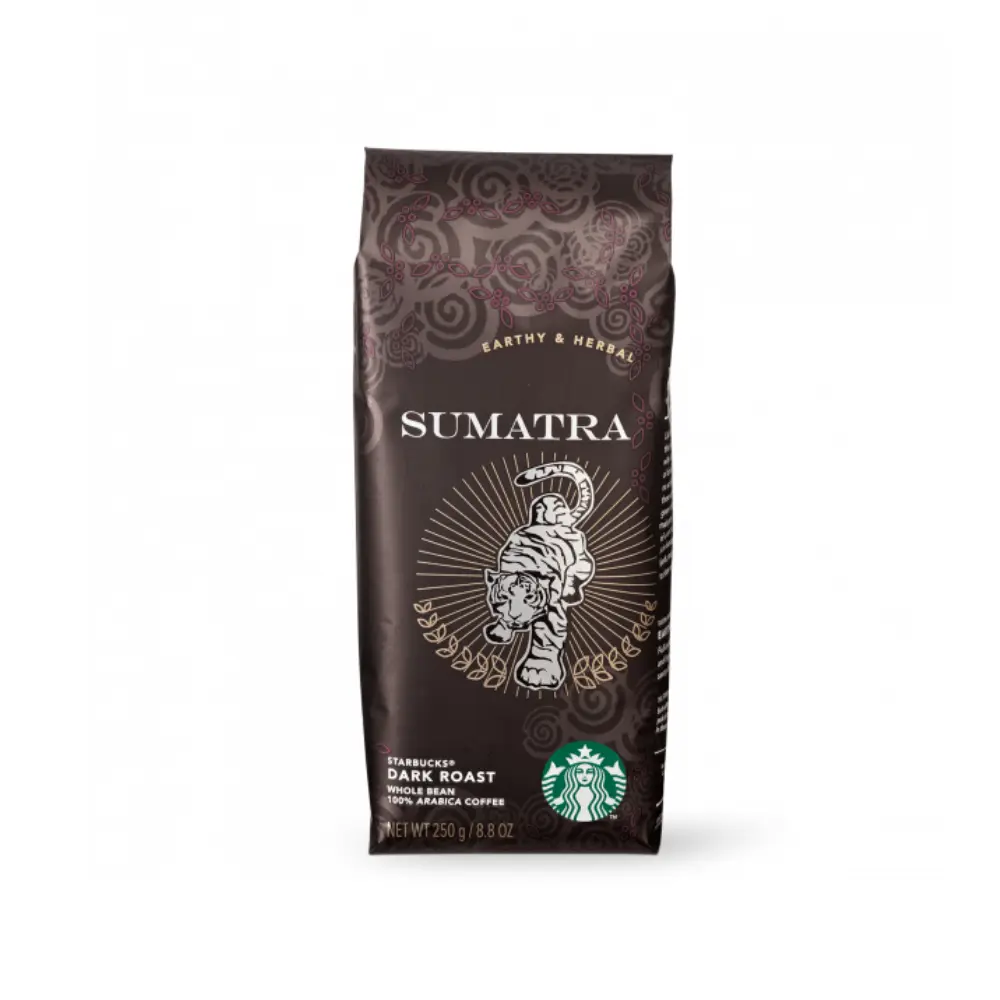
Starbucks Sumatra Coffee is a testament to the enchanting Indonesian island it originates from. Boasting a full body and smooth mouthfeel, this coffee offers lingering notes of dried herbs and earthy freshness, with virtually no acidity. This blend undergoes a dramatic transformation during roasting, shifting from dark coral green to rich, oily mahogany, unlocking bold flavors that coffee aficionados crave.
Highlights:
- Exhibits a spicy, full-bodied profile reminiscent of its lush Indonesian roots.
- Offers a smooth mouthfeel accompanied by notes of dried herbs and fresh earth.
- Roasted to perfection, revealing bold, irresistible flavors.
- Forms the foundation of Starbucks’ most cherished blends.
Peet’s Coffee Sumatra – A Symphony of Balance
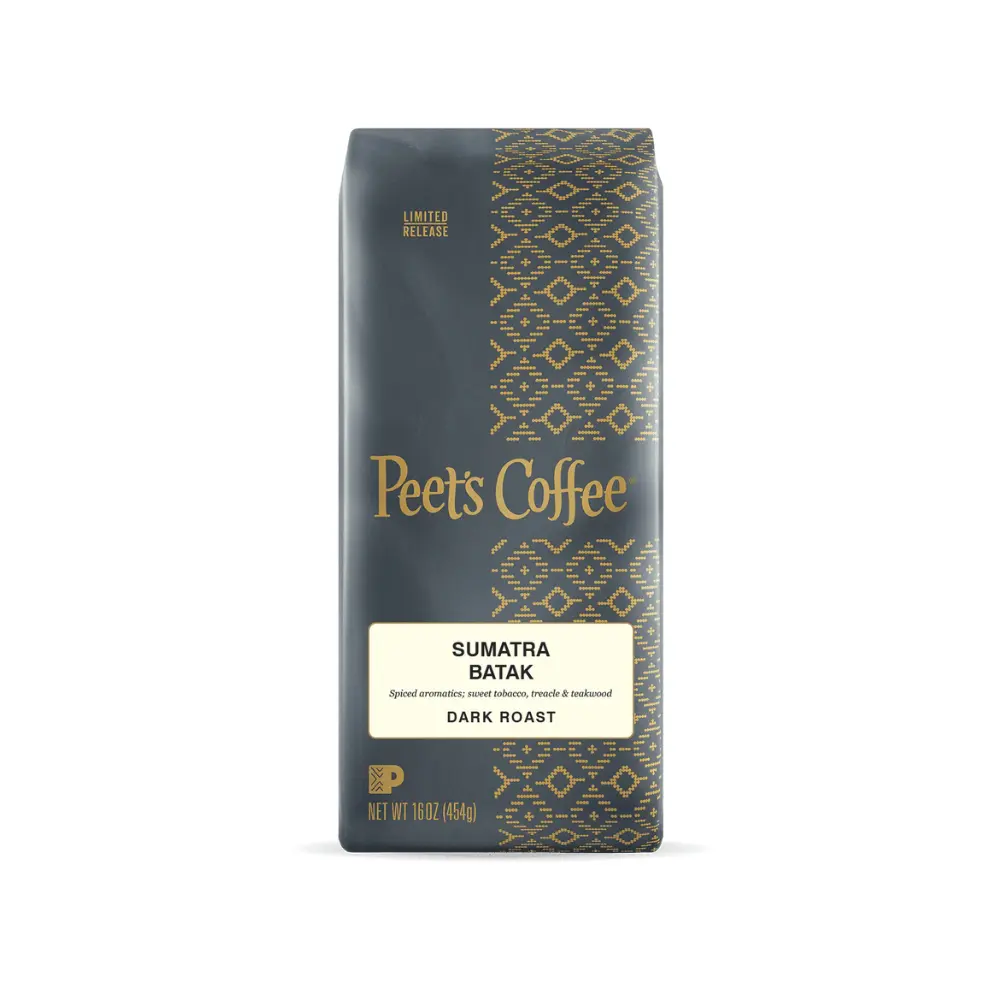
Peet’s Coffee Sumatra is an intriguing dark roast sourced from the Indo-Pacific region. Unlike other blends, it focuses on straightforwardness and balances over theatricality. Although it lacks the typical Sumatra-style resonance, it leaves a sweet yet pungent impression that is both balanced and pleasing.
Highlights:
- A balanced, dark roast coffee that leaves a smoothly pungent impression.
- This Sumatra blend is a Lintong, from a small growing area within the larger Mandheling region.
- Direct, pleasing, and foregoing unnecessary drama, a true ode to balance.
Volcanica’s Sumatran Symphony
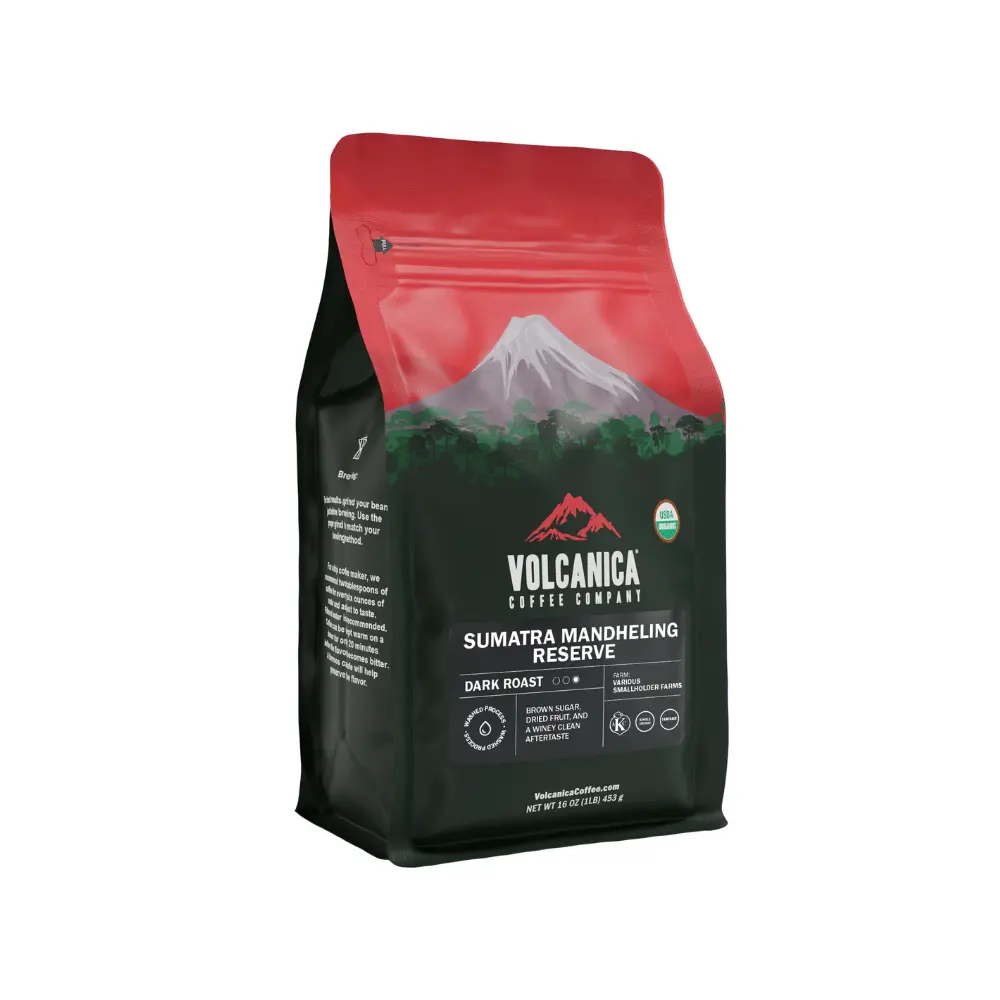
Volcanica’s Sumatra Mandheling Coffee is a unique Indonesian offering that is enticingly smooth. It flaunts a rich, heavy body and a low acidity level, along with an exotic flavor profile and an intense syrupy aftertaste. This blend’s earthy richness creates a memorable coffee experience. Want to try it? Enjoy 10% off Sumatran coffee below at Volcanica coffee
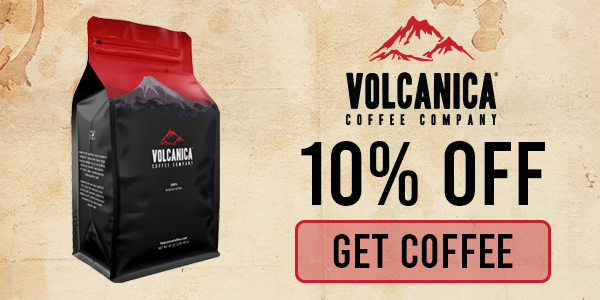
Highlights:
- Certified Fairtrade and Kosher, adhering to ethical and quality standards.
- Boasts a rich, heavy body with a low acidity level, making it a delightfully smooth coffee.
- Offers flavor notes of dark chocolate, black licorice, and a syrupy aftertaste.
- Undergoes a Washed Process and a medium roast to bring out its distinct flavor.
- The coffee is lower in acidity due to prolonged roasting of beans naturally lower in acid, leading to a higher pH and a low-acid coffee experience.
Kopi Luwak – The Sumatra Coffee Enigma
One question that is often posed in coffee circles is: does the infamous Kopi Luwak qualify as Sumatra Coffee? Well, it’s time to unravel this caffeinated conundrum.
Kopi Luwak, or Civet Coffee, carries a reputation for being the priciest coffee globally. Given its significant link with the Indonesian coffee scene, particularly Sumatra, it’s only fair to delve into this unique coffee variant while discussing Sumatran coffee.
What is Kopi Luwak?
Originating in Indonesia, specifically Sumatra, Kopi Luwak is more associated with its distinctive production method rather than the beans themselves. This specialty coffee is derived from the partially digested cherries of the Indonesian palm civet. Harvesters collect the beans, meticulously separate the outer skin, and subject them to thorough cleaning before roasting and subsequent sale. Due to its unparalleled process, Kopi Luwak is frequently priced at extravagant levels.
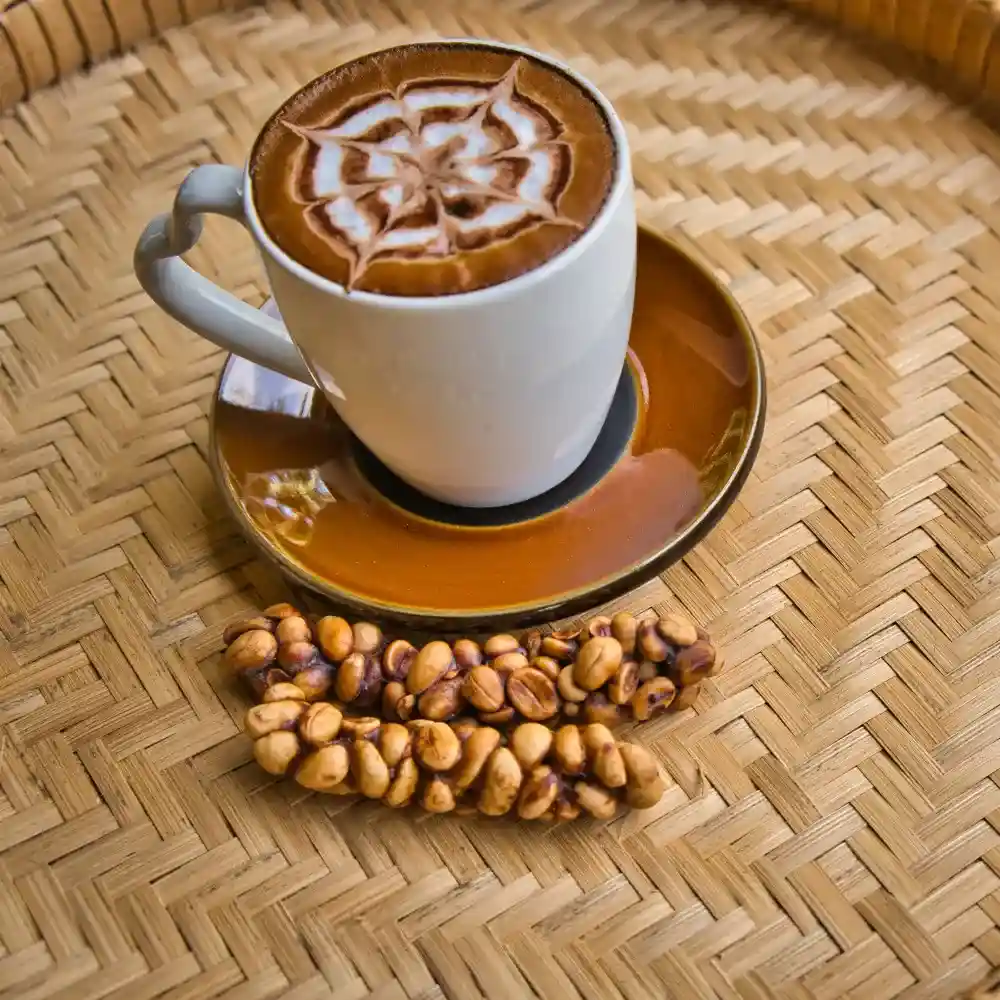
Advocates of Kopi Luwak often promote it as a high-quality coffee, arguing that palm civets meticulously choose only the finest and ripest coffee cherries. However, the flavor profile of Kopi Luwak lacks consistency due to significant variations in the beans’ origins.
Why Kopi Luwak Raises Eyebrows?
Despite its unique appeal, many reasons suggest steering clear of Civet Coffee. Firstly, a large portion of the coffee marketed as Kopi Luwak is often either counterfeit or diluted with traditionally processed beans. Secondly, the production process of authentic Kopi Luwak often involves horrific treatment of the palm civets, typically involving caged, force-fed animals.
Even if you’re indifferent to the ethical implications, you should consider the quality of the beans. The force-feeding process undermines the idea of uniformly ripe, handpicked coffee, meaning you’re possibly paying a hefty sum for mediocre, overpriced, and ethically questionable coffee.
Sumatra Mandheling or any other Indonesian coffee discussion often brings up Kopi Luwak. It’s important to clarify that while Kopi Luwak originates from Indonesia, it does not strictly qualify as Sumatra coffee. “Luwak” is the Indonesian term for the Asian palm civet, a Southeast Asian mammal known for its unique coffee processing method.
Despite its high price tag and labor-intensive production, Kopi Luwak is often criticized for its thin, stale, and flavorless taste. Furthermore, due to the ethical controversies surrounding its production, many coffee enthusiasts prefer to steer clear of it. Therefore, Kopi Luwak, while associated with Sumatra, is more of an enigmatic offshoot than a representative of Sumatran coffee.
Conclusion
In this comprehensive journey, we’ve uncovered the nuanced layers that make up the world of Sumatra coffee. From the lush Indonesian island, Sumatra’s diverse terrain and unique processing methods give birth to coffee beans with an exquisite depth of flavor. We’ve ventured through the spicy and full-bodied notes of Starbucks Sumatra coffee, discovered the ingratiating dark roast of Peet’s Coffee Sumatra, and reveled in the rare, low-acid, and exotic charm of Sumatra Mandheling Coffee.
We’ve also unveiled the enigmatic Kopi Luwak and explored its contentious ties with the Sumatran coffee industry. Ultimately, we return to the question – what is Sumatra coffee? It’s more than just a beverage – it’s a reflection of a rich, vibrant culture and a testament to the versatility and diversity of coffee as a whole.
Whether you’re a seasoned coffee connoisseur or just embarking on your caffeine-filled journey, Sumatra coffee offers a flavorful expedition unlike any other. Its unique blend of bold, earthy flavors and tantalizing aroma truly encapsulates the wild spirit of its Indonesian origins. So, here’s to Sumatra coffee beans – the unsung heroes that invigorate our senses and elevate our coffee experiences one cup at a time!
FAQ
What is the traditional brewing technique for Sumatra coffee?
The "tubruk" coffee is a traditional brewing method for Sumatra coffee, emphasizing its full-bodied, complex, and low-acidity flavors.
How does the climate and geography of Sumatra influence the flavor profile of its coffee?
Sumatra's volcanic soil, tropical climate, and high altitude contribute to a unique earthy, herbal, and full-bodied flavor profile in its coffee beans.
How are sustainable farming practices being implemented in Sumatra coffee production?
Many Sumatra coffee farms are transitioning towards sustainable practices, including shade-growing methods, organic farming, and Fairtrade standards to improve environmental and social impacts.
What is the role of Sumatra coffee in the global coffee market?
Sumatra coffee holds a significant position in the global market, recognized for its unique flavor and the contribution of its beans to many cherished coffee blends worldwide.




















